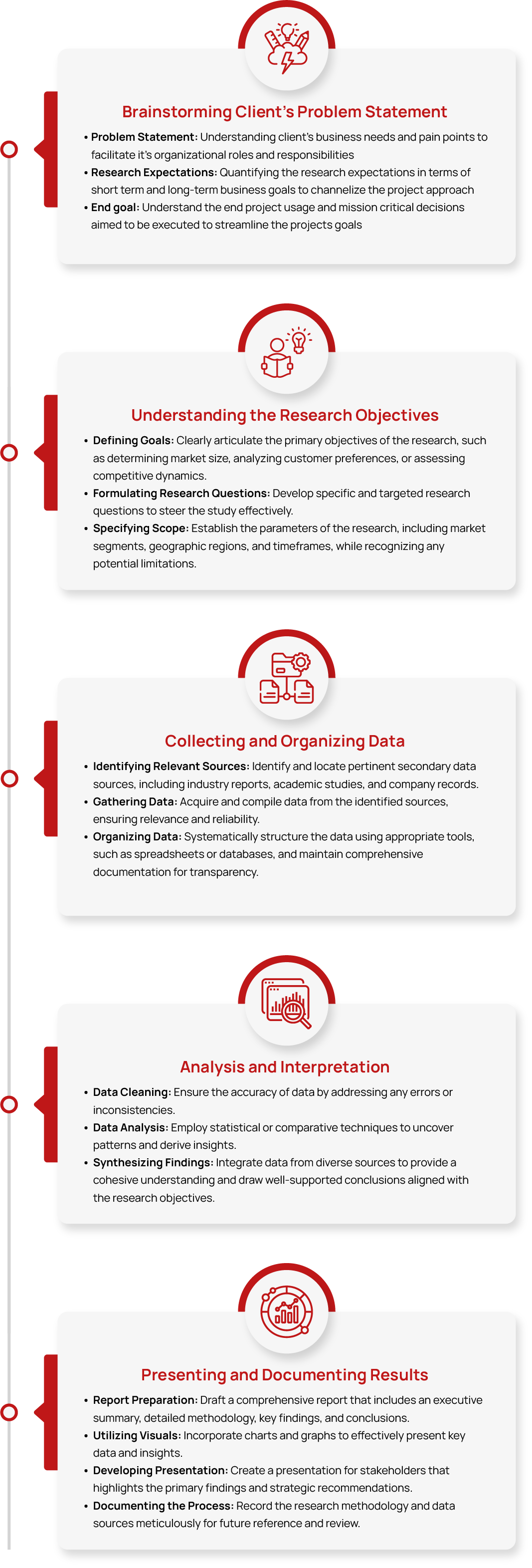Plastic Compounding Market Size, Share, Trend & Growth Report, 2032
- Summary
- Market Landscape
- Methodology
- Table of Content
Plastic Compounding Market Size, Share, Growth, & Trend Analysis Report, By Source (Fossil-based, Bio-based, Recycled), By Product, By Application, By Region (North America, Europe, Asia Pacific, Latin America, Middle East & Africa) and Forecasts 2024 – 2032
Plastic Compounding is the process of mixing plastic resins with additives, fillers, colorants, or other materials to create a custom material that meets specific requirements. This process improves the properties of the plastic, such as its strength, flexibility, colour, or durability, making it suitable for different applications in industries like automotive, packaging, and electronics.
The Global Plastic Compounding Market was valued at approximately USD XX billion in 2024 and is projected to reach USD XX billion by 2032, growing at a Compound Annual Growth Rate (CAGR) of more than 6% during the forecast period from 2025 to 2032.
Industry Trends
The increasing demand for plastic products is driving the growth of the plastic compounding market. Plastics offer numerous benefits, such as strong weather resistance, the ability to form tight seals, and excellent safety and hygiene properties, particularly for food packaging.
They are lightweight yet durable, with a high strength-to-weight ratio that facilitates easier transportation. Additionally, plastics are thermally and electrically insulating, versatile, and resistant to shattering, chemicals, and extreme environmental conditions.
Their transparency, recyclability, and inexpensive nature make them highly desirable across various industries, including packaging, automotive, electronics, medical devices, and more.
This wide array of advantages supports the continued expansion of the market.
However, there are significant restraints linked to plastic compounding, especially regarding health and environmental concerns. Certain chemicals used in plastic compounding processes can be hazardous, leading to potential endocrine disruption, cancer, and developmental issues, particularly in children.
Materials like DEHP and other toxic substances such as mercury, lead, and cadmium are particularly problematic. Moreover, microplastics, which result from the breakdown of plastics, pose risks to both human health and the environment.
Plastic compounding processes also face challenges such as high equipment costs and quality control issues. Inconsistent mixing and filling patterns can lead to defects in the final product, which impacts its performance.
These concerns, alongside the environmental implications of plastic waste and the need for biodegradability, could hinder the market's growth.
Looking ahead, advancements in compounding technology present an opportunity for market growth. The development of bio-based and sustainable additives offers potential solutions to address environmental challenges and improve product quality.
Advanced compounding technologies are helping to overcome challenges such as high equipment costs and inconsistent mixing, leading to better performance and more sustainable practices.
Furthermore, various industries, including healthcare, automotive, and construction, are increasingly relying on innovative plastic compounding solutions. As technology evolves, it will enable the market to cater to more specific requirements and promote a greener, more efficient approach to plastic production.
These opportunities for innovation and sustainability are likely to drive the plastic compounding market forward.
Industry Expert’s Opinion
- Dr Sailaja Said, Dr R R N Sailaja, Senior Fellow at the Environment & Waste Management Division of The Energy and Resources Institute (TERI)
“This industry is still emerging. Also, while producing bioplastics is relatively inexpensive when compared to microbial plastics, the process is still not as cost effective as producing synthetic plastics. Further, the fact that bioplastics are not at a par in strength and durability with synthetic plastics whose shelf life is years-long adds to the reluctance in its widescale adoption. As plant or animal-based material is a key ingredient in bioplastics, making them hydrophobic (water repellent) is still a work in progress.”
TT Consultants’ Perspective
The plastic compounding market is witnessing significant growth, driven by the rising demand for sustainable materials and high-performance solutions across industries like automotive, packaging, and electronics.
The shift towards recycled and bio-based plastics, along with advancements in compounding technologies, is expected to accelerate market expansion. Increasing regulatory pressures and consumer demand for eco-friendly products are further fuelling the market.
As global manufacturing increasingly prioritizes sustainability, there are ample opportunities for businesses to innovate and capitalize on emerging trends within the plastic compounding sector.
Market Segmentation
1. By Source (Fossil-based, Bio-based, Recycled)
Fossil-based compounded plastics continue to dominate the market, driven largely by the widespread use of petrochemical-based plastics in industries like automotive, construction, medical, and packaging.
These plastics compounds, derived from fossil fuels, are cost-effective and efficient to produce, making them the preferred choice for manufacturers. This economic advantage is a key factor in their continued dominance, especially when compared to alternatives like bio-based plastics.
Recycled plastic compounds, accounting for a significant portion of the market, are gaining traction due to growing environmental concerns and the push for sustainability. As industries work towards reducing their reliance on virgin plastics, the demand for recycled materials has increased.
This shift is encouraging plastic recyclers to expand their operations, reflecting the broader movement toward a circular economy where materials are reused rather than discarded.
Bio-based plastic compounds, though still a smaller segment, have been gaining popularity due to government initiatives aimed at reducing waste and landfilling. These eco-friendly plastics, often used for compostable bags and organic waste collection, are becoming more prevalent as waste management infrastructure improves.
As concerns about environmental impact grow, the demand for bio-based plastics is expected to rise, reflecting the shift toward more sustainable practices.
2. By Application (Automotive, Aerospace & Défense, others)
The automotive segment has a significant share of the plastic compounding market, driven using materials like PP and PET compounds in various automobile applications.
These plastic compounds are preferred for parts such as body components, bumpers, and trim due to their desirable properties, including low thermal expansion, high stiffness, and excellent resistance to moisture, scratches, and impact, especially in low temperatures.
Over time, different grades of these compounds have been developed to meet the diverse performance needs of the automotive industry. The increasing demand for lightweight materials, coupled with stricter emission and weight regulations, is expected to further fuel the growth of automotive plastic compounding in the coming years.
This trend is a direct response to the need for more sustainable, energy-efficient solutions to address environmental concerns.
Following closely is the packaging sector, which accounts for a significant share of the market. The demand for compounded plastics in this industry is largely driven by the mass consumption of packaged goods across various regions.
Regulatory bodies have established guidelines for packaging materials, especially those intended for food contact, which has made polypropylene and polyethylene formulations highly sought after.
These materials not only improve the impact strength, flexibility, and transparency of packaging but also offer cost-effective solutions for manufacturers. As global demand for packaging continues to rise, especially in emerging economies, the plastic compounding market in the packaging sector is expected to see steady growth.
This highlights the ongoing trend towards more efficient, sustainable materials in consumer goods packaging.
3. By Region (North America, Europe, Asia Pacific, Latin America, Middle East & Africa)
The Asia Pacific region dominates the plastic compounding market, driven by strong manufacturing output, a growing e-commerce market, and favourable demographics. Investments in key countries are boosting infrastructure, talent development, and supply chain capabilities, which in turn is accelerating market growth.
The rising demand for consumer goods, such as home appliances, in countries like India, Vietnam, and China is fuelling the need for plastic compounding in these sectors. Additionally, the automotive market in Asia Pacific is expanding, supported by favourable government policies and foreign investments.
The relatively low manufacturing costs in countries like China and India further enhance the region's position as a major player in the plastic compounding industry. As these factors continue to evolve, Asia Pacific will likely maintain its leadership role in the market.
Europe follows as another key player in the plastic compounding market, with growth driven by automotive production, an increasing standard of living, and a growing aging population. The region’s well-established infrastructure, coupled with the presence of leading automotive manufacturers, is creating significant demand for plastic compounding in the automotive sector.
As Europe continues to focus on innovation in transportation and consumer goods, the need for advanced materials, including compounded plastics, is expected to rise. With its strong industrial base and commitment to sustainability, Europe is poised for steady growth in the plastic compounding market.
This highlights the ongoing regional shifts in manufacturing and consumer trends, shaping the future of the industry.
Competitive Scenario
The plastic compounding market is supported by major players such as BASF SE, SABIC, Dow, Inc., KRATON CORPORATION, and LyondellBasell Industries Holdings B.V. These companies are known for their expertise in manufacturing and supplying a wide range of compounded plastics.
Other notable companies contributing to the market include DuPont de Nemours, Inc., RTP Company, S&E Specialty Polymers, LLC (Aurora Plastics), and Asahi Kasei Corporation. Covestro AG, Eurostar Engineering Plastics, and KURARAY CO., LTD.
Recent Developments and Strategic Activities:
- On June 14, 2024, LyondellBasell has announced the successful start-up of a new production line at its Dalian site in China, marking a significant expansion in its Advanced Polymer Solutions (APS) business.
This new line will focus on producing a wide range of high-performance polypropylene (PP) compounds, primarily aimed at meeting the demands of the rapidly growing automotive industry.
With an annual capacity of 20,000 tonnes, this new line will double the production capacity at the Dalian site, enabling LyondellBasell to better serve the increasing market demand. - On June 8, 2024, Borealis has announced the installation of a semi-commercial demonstration compounding line at its site in Beringen, Belgium, aimed at producing recyclate-based polyolefins (rPO). The new line is set to be completed later this year and is expected to be fully operational in the first half of 2025.
- On October 18, 2023, Covestro has officially launched its inaugural dedicated mechanical recycling (MCR) compounding line for polycarbonates at its integrated site in Shanghai, China.
This new line, with an annual capacity of 25,000 tons, is set to produce premium-quality polycarbonates and blends containing mechanically recycled materials, responding to the rising demand for post-consumer recycled (PCR) plastics.
The Shanghai facility is a significant milestone in Covestro's commitment to sustainability, aligning with its goal of achieving a circular economy and climate neutrality by 2035.

Please fill out the form to request the ToC and gain access to detailed insights in the report.
Request Table of Contents







